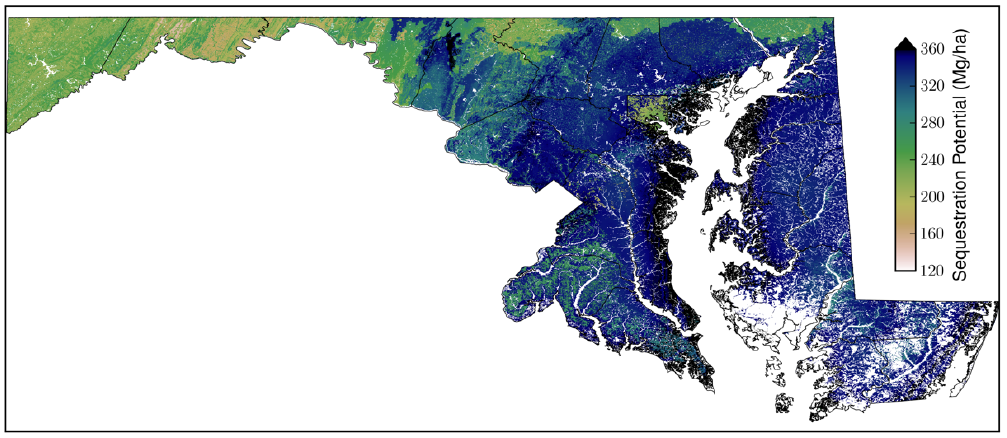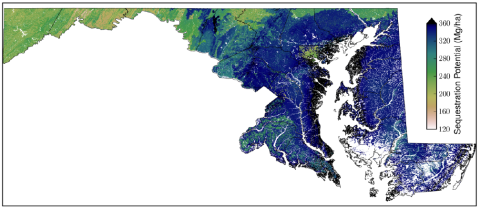Forest Aboveground Biomass and Carbon Sequestration Potential for Maryland, USA
The NASA Carbon Monitoring System (CMS) has released 90 m resolution maps of estimated forest aboveground biomass (Mg/ha) for nominal year 2011 and projections of carbon sequestration potential for the state of Maryland. Estimated biomass and sequestration potential were computed using the Ecosystem Demography (ED) model, which integrates data from multiple sources, including: climate variables from the North American Regional Reanalysis (NARR) Product, soil variables from the Soil Survey Geographic Database (SSURGO), land cover variables from airborne lidar, the National Agriculture Imagery Program (NAIP) and the National Land Cover Database (NLCD), and vegetation parameters from the Forest Inventory and Analysis (FIA) Program.
The CMS is designed to make significant contributions in characterizing, quantifying, understanding, and predicting the evolution of global carbon sources and sinks through improved monitoring of carbon stocks and fluxes. See all ORNL DAAC datasets from the Carbon Monitoring System.
Data Citation: Hurtt, G.C., M. Zhao, R. Sahajpal, A. Armstrong, R. Birdsey, E. Campbell, K. Dolan, R.O. Dubayah, J.P. Fisk, S. Flanagan, C. Huang, W. Huang, K. Johnson, R. Lamb, L. Ma, R. Marks, D. O'Leary III, J. O'Neil-Dunne, A. Swatantran, and H. Tang. 2019. Forest Aboveground Biomass and Carbon Sequestration Potential for Maryland, USA.. ORNL DAAC, Oak Ridge, Tennessee, USA. https://doi.org/10.3334/ORNLDAAC/1660
Data Center: ORNL DAAC
Sponsor: EOSDIS


